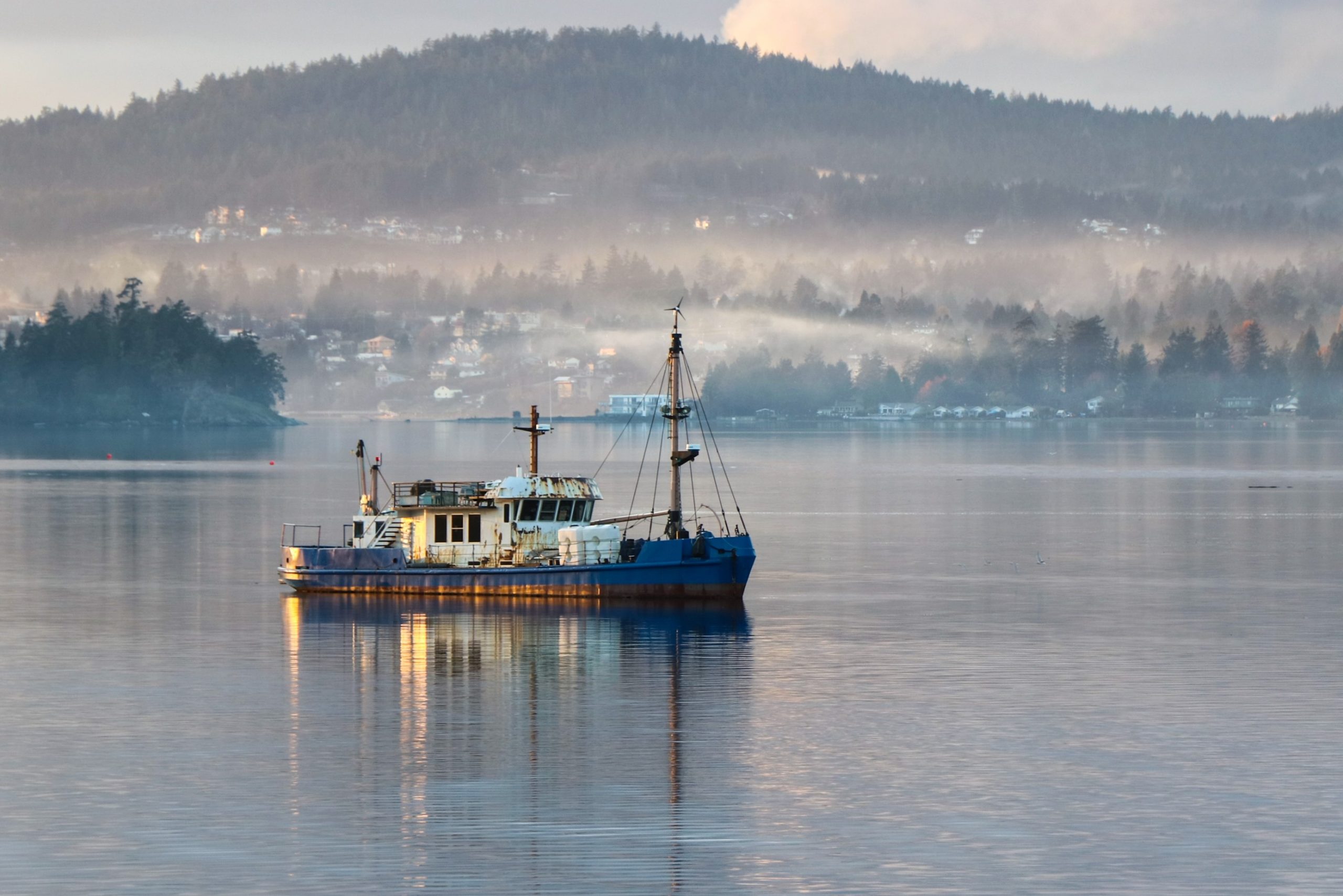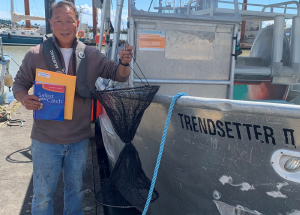Commercial fishermen are likely to meet Fish Safe teams on docks, where they’re sharing information about preventing collisions.

Photo credit: istock.com/LynMc42k
The Port of Vancouver receives 3,160 vessels each year — about 9 ships per day, and it predicts this could increase to about 12 ships per day by 2026, based on a 2016 analysis.
More vessels, tug boats, and barges on the water make it more important than ever for fishing crews to understand “the rules of the road.”
I spoke with Ryan Ford, program manager of Fish Safe, B.C.’s industry-funded safety organization that helps fishing crews manage risks and emergencies at sea.
In May this year, Transport Canada awarded Fish Safe a grant for its work around collision avoidance. The work is carried out as a component of its Safest Catch program.
“The primary concern and focus of this project is to prevent collisions between fishing vessels and large ocean-going cargo ships and tankers. This is where the most risk is,” Ryan says. “A collision between a small fishing vessel and a large ocean-going vessel would presumably result in an oil spill, and would be catastrophic for both vessels.”
Visiting fishermen up and down the Coast
Ryan and his team are visiting vessels and docks throughout B.C. as part of their education and outreach. Says Ryan: “We meet fishermen one-on-one to discuss collision avoidance.”
Ryan and his team are visiting coastal communities throughout Vancouver Island, as well as Bella Bella, Hartley Bay, Bella Coola, Metlakatla, and other Indigenous coastal communities in more remote Central and North Coast locations. They are also discussing the navigation rules for fishermen at the Port of Vancouver and the Port of Prince Rupert.
Fish Safe is also providing day shapes to fishermen who need them. Day shapes are geometric shapes, hung from a vessel, to communicate with other vessels. Different shapes mean different things, for example when a boat is fishing or trawling, it displays two black cones with the points together. Day shapes are a Transport Canada requirement for many fishing vessels. Learn more about day shapes and how to display them from this Boat Safe post.

Fisherman Ken Yoshikawa holds a dayshape for his vessel.
Photo credit: Fish Safe
Ryan says the Fish Safe team is making the day shapes in-house out of metal rings and netting.
“Our industrious team of admin staff has stepped up to make them,” he says. “Fishermen are responding very favourably to the availability of day shapes — some know they should have them and use them, and others weren’t aware.”
Fish Safe is also raising awareness through quizzes and a safe navigation and collision prevention guide based on the Collision Regulations (in both English and Vietnamese).
Fishermen who complete at least one quiz are entered to win one of four VHF radios. Giveaways will be at the end of the summer fisheries and at the end of the project, in March 2022. You can learn more and sign up for the Safest Catch program on Fish Safe’s website.
Are you spending any time on the water, at work or at play? Let me know!


